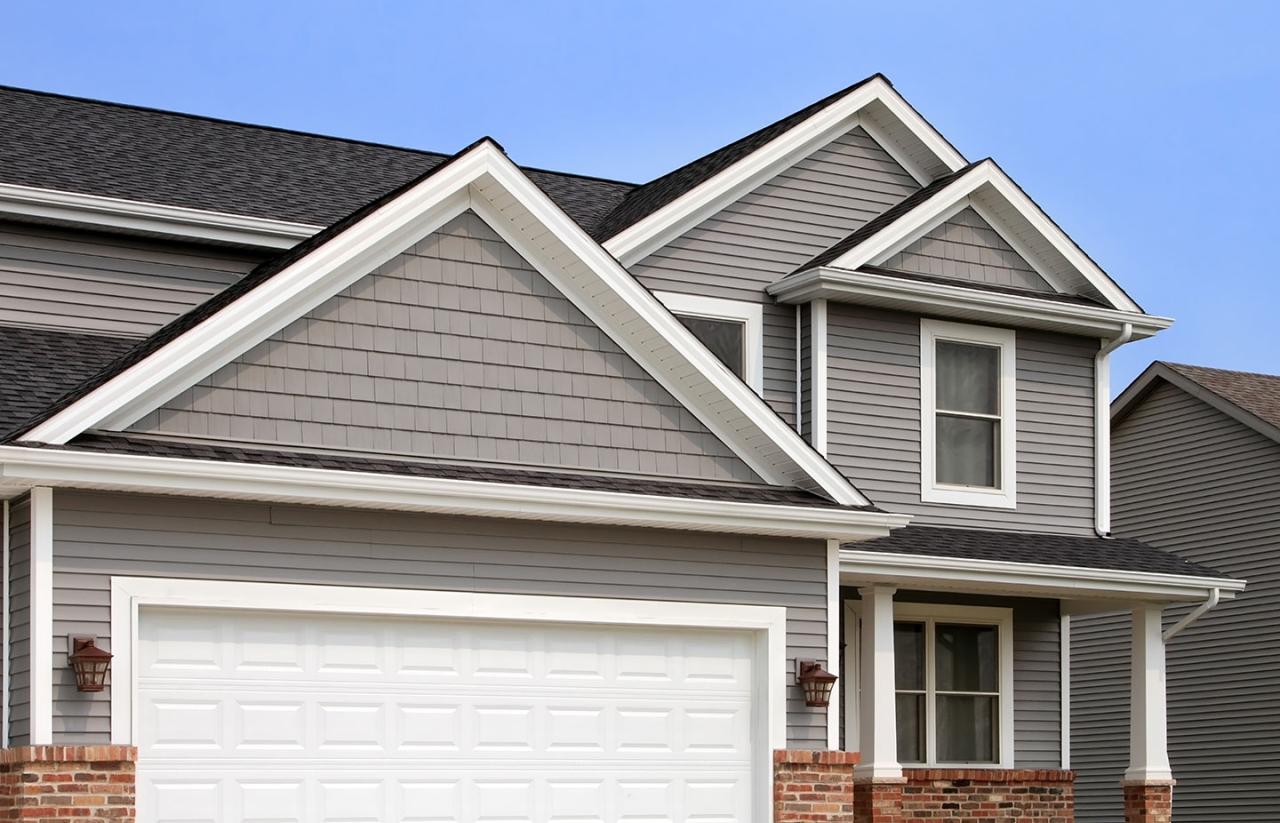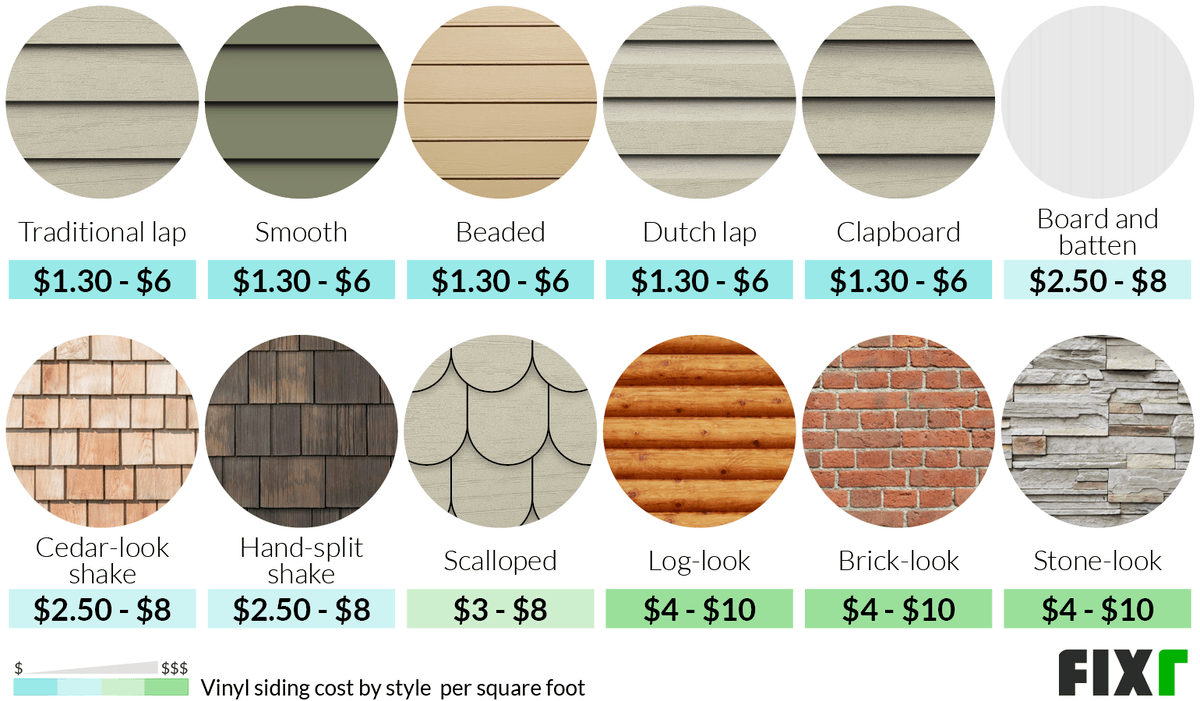The Ultimate Guide to the Cost of Vinyl Siding and Installation
Exploring the cost of vinyl siding and installation opens up a world of possibilities. From understanding the factors that influence pricing to comparing it with other materials, this guide delves into everything you need to know in a detailed yet engaging manner.
Get ready to uncover the secrets behind vinyl siding costs and make informed decisions for your home.
Cost of Vinyl Siding

When considering the cost of vinyl siding, several factors come into play that influence the overall price. These factors include the quality of the material, the size of the project, the complexity of the installation, and any additional features or customization.
Factors Influencing Cost
- The quality of the vinyl siding: Higher quality materials will generally come at a higher price point due to their durability, longevity, and aesthetics.
- Project size: The larger the area to be covered with vinyl siding, the higher the overall cost of materials and labor.
- Installation complexity: If the installation requires additional steps or adjustments due to the structure of the building, the cost may increase.
- Additional features/customization: Any extra features or customization, such as trim work or unique colors, can add to the total cost.
Typical Cost Range
On average, the cost of vinyl siding materials can range from $2 to $7 per square foot. This cost includes the siding panels, trim pieces, and any additional accessories needed for installation.
Quality Impact on Price
The quality of vinyl siding directly affects its price point. Higher quality siding, which is often thicker, more durable, and offers better insulation properties, will be more expensive than lower quality options. While the initial cost may be higher, investing in high-quality vinyl siding can lead to long-term savings by reducing maintenance and replacement costs in the future.
Installation Cost

Installing vinyl siding involves the process of attaching the vinyl panels to the exterior walls of a building. This typically includes measuring, cutting, and securing the siding to create a weatherproof barrier that enhances the appearance of the structure.Professional installation of vinyl siding can cost between $2,000 to $16,000, depending on the size of the project, the complexity of the design, and the contractor's rates.
On the other hand, a DIY installation can significantly reduce costs, with an average range of $1,000 to $3,000 for materials and tools.
Comparing Professional vs DIY Installation
- Professional Installation:
- Pros:
- Expertise and experience in handling the installation process.
- Quicker completion time due to the efficiency of professional contractors.
- Potential warranty coverage for the work done.
- Cons:
- Higher overall cost due to labor charges.
- Limited control over the timeline and scheduling of the project.
- Pros:
- DIY Installation:
- Pros:
- Cost-effective option for budget-conscious homeowners.
- Flexibility to work at your own pace and schedule.
- Sense of accomplishment from completing the project yourself.
- Cons:
- Potential for errors or mistakes during installation.
- Requires significant time and effort, especially for first-time DIYers.
- Pros:
Tips for Reducing Installation Costs
- Obtain multiple quotes from different contractors to compare prices and services offered.
- Consider off-season installations when contractors may offer discounts to fill their schedules.
- Opt for standard-sized panels to minimize waste and reduce material costs.
- Prepare the exterior walls properly before installation to avoid potential issues that could increase labor costs.
- Explore financing options or incentives that may be available for energy-efficient siding installations.
Cost Comparison with Other Siding Materials
When it comes to choosing the right siding material for your home, cost is a significant factor to consider. Let's compare the cost of vinyl siding with other popular siding materials like wood, fiber cement, and metal to determine the long-term cost-effectiveness and scenarios where vinyl siding may be a better financial choice.
Wood Siding
Wood siding is known for its natural beauty and charm, but it typically comes with a higher initial cost compared to vinyl siding. However, wood siding requires more maintenance over time, including staining, painting, and sealing, which can add up in terms of long-term costs.
In the end, vinyl siding may be more cost-effective due to its lower maintenance requirements and longer lifespan.
Fiber Cement Siding
Fiber cement siding is a durable and low-maintenance option that falls somewhere between wood and vinyl siding in terms of cost. While fiber cement siding is more expensive than vinyl upfront, it offers better durability and weather resistance, potentially reducing long-term maintenance costs.
However, for those looking for a more budget-friendly option without compromising on quality, vinyl siding remains a cost-effective choice.
Metal Siding
Metal siding is another durable option that can withstand harsh weather conditions. It typically falls on the higher end of the cost spectrum compared to vinyl siding. While metal siding may require minimal maintenance, it may not provide the same level of insulation and energy efficiency as vinyl siding.
For homeowners looking for a balance between cost, durability, and energy efficiency, vinyl siding may offer a more cost-effective solution.
Additional Costs to Consider
When planning for vinyl siding installation, it's crucial to take into account various additional costs that may arise throughout the process. These extra expenses can impact the overall budget and should be factored in from the beginning to avoid any surprises down the line.
Insulation and Trim Pieces
One of the additional costs to consider when installing vinyl siding is the need for insulation and trim pieces. Proper insulation can help improve energy efficiency and protect your home from elements, while trim pieces are essential for a polished and finished look.
These materials are necessary for a successful vinyl siding installation and should be included in your budget.
Permits and Regulations
Another factor to keep in mind is the cost of permits and compliance with local regulations. Depending on where you live, you may need to obtain permits for the installation of vinyl siding. These permits come with associated fees that should be accounted for in your overall budget.
It's important to ensure that you are following all relevant regulations to avoid any fines or delays in the project.
Geographical Location Impact
The geographical location of your property can also impact the overall cost of vinyl siding installation. Factors such as labor costs, accessibility to materials, and climate conditions can vary from one region to another, leading to different pricing structures. It's essential to consider these location-specific factors when budgeting for your vinyl siding project.
Maintenance and Repair Costs
While vinyl siding is known for its durability and low maintenance requirements, it's important to factor in potential future maintenance and repair costs. Over time, your siding may need cleaning, repairs, or even replacement due to wear and tear or damage.
By budgeting for these ongoing maintenance costs, you can ensure that your vinyl siding remains in top condition for years to come.
Conclusive Thoughts

As we conclude this insightful journey into the cost of vinyl siding and installation, remember that investing in quality materials and professional installation can truly enhance the value and aesthetics of your property. With the right knowledge in hand, you're equipped to make the best choices for your home improvement projects.
Query Resolution
What factors influence the cost of vinyl siding?
The factors include quality of materials, size of the project, additional features like insulation, and labor costs.
Is DIY installation cheaper than professional installation?
While DIY installation can save money on labor costs, professional installation ensures proper fit and finish, reducing the risk of future repairs.
How does vinyl siding compare to other materials in terms of cost?
Vinyl siding is generally more cost-effective compared to materials like wood or metal, offering a good balance between price and durability.
What are some additional costs to consider for vinyl siding installation?
Additional costs may include insulation, trim pieces, permits, and potential maintenance or repair expenses in the future.




